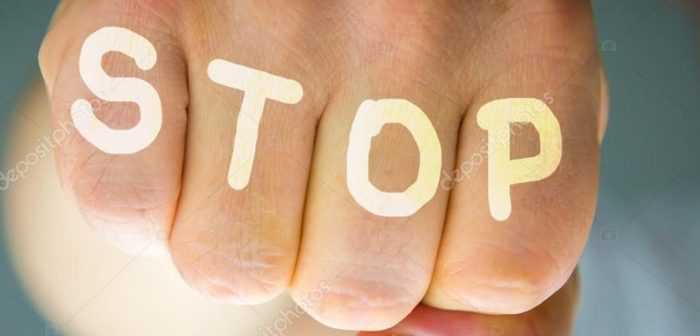
Use stop-loss orders whenever you enter a trade to limit the risk and avoid a potentially great loss
By Guy Avtalyon
A stop loss order is an order to sell a security when it reaches a given price. Put simply, the stop-loss sell order is designed to limit an investor’s loss on a particular stock. Stop-loss orders appear in four classes. But some brokers may offer products that vary in their structure and complexity. Some classes are more commonly used than others and dealers do not typically offer all classes of stop-loss orders.
To some degree, each type of this order poises protection against the risk of “slippage” and the risk of an early exit from the position. Slippage points to the difference between the order level and the current trade price. It may be increased or decreased depending on the type of stop-loss order trader uses. All of these definitions fit the normal market conditions. Counterparties should ensure that they have an independent understanding of the parameters of normal market conditions. It is important for each currency market to effectively recognize risks during the abnormal market condition
Why use Stop Loss Order
When trading on an asset, investors are exposed to potentially high risk if the price moves towards a direction which is the opposite of the one they had anticipated. This could result in considerable losses in the investment unless action is taken to exit the non-profitable position as soon as possible. When the price moves in a direction that provides the current position profitable, a trader might want to close the position in the profits earned so far. But, the possibility of turning winning trades into losing positions is always present. Also, it could lead to abnormal losses. Stop Loss usually involving the prices at which a position was opened, and are frequently used by traders, as well as automated trading systems. Trading is almost exclusively conducted electronically through a computer.
In addition to that, investors have replaced the broker with a platform for automated trading called algorithmic trading. There is a lot of proof that can confirm the increased algorithmic trades can decrease wrong price choices and reduce the balance of offer risk over different price levels of an asset correlated with the trades. These results show that algorithmic trading lowers the cost of trades and enhances the informativeness of quotes. Today more and more brokers use electronic trading platforms, and more individual investors opt for algorithmic trading. So this order is calculated for every trade in a few seconds.
Take Profit
Returns can be either absolute or relative. The price is within the price range x ∈ (L, b × L), or the investor, if x is the entering price, can simply set a constant I (proportional to the fluctuation we add), where x−I is the stop-loss price.
The returns change over seasons and periods, according to the influences an asset undergoes as a result of outside or inside factors. The orders with stop loss and take profit, when activated, oppose the market trend (take profit) or intensify the movement (stop loss). They have great influence even over the liquidity during a flash crash. The use of stop-loss orders and take profit orders and the range of these orders reflect the risk-taking desire of the investor. Taking profit and stop-loss functions display the flexibility of profitability adjusted on each asset.
The Stop Loss order protects the trader from holding a position that is not profitable for a long time. Contrary, that could result in big losses of capital. On the other hand, there is a distinction between the profits’ enhancement and risk reduction. The Stop Loss order has an influence on the fall of prices. In forex, the variance in exchange rates is faster when the prices hit levels at which Stop Loss order is usually set. Secondly, the influence of the Stop Loss order is bigger than the effect of the take profit order. It also helps the fast changes in prices by creating an opposite trend. Thirdly, the impact of stop-loss orders has an extended duration than that of the take profit orders.
How Stop Loss order works
Stop-loss orders work based on a trigger price. We can recognize two types of stop-loss orders: stop-loss limit (SL) and stop-loss market (SLM) orders.
SL orders consist of a price plus trigger price. When the trigger price is reached, your Stop Loss order is triggered and a limit order is will be sent to the market. The limit order executes between your price and trigger price range only.
For example, you buy a stock at $100 and place a sell stop-loss order with the price at $98 and trigger a price of $98.50. When the price of the stock reaches or goes below $98.50, your stop-loss order is triggered. A sell limit order with a limit price of $98 is sent to the exchange order queue. Since a limit order is executed at the best available price. If the price of the stock is at $98 or above, your sell limit order of price $98 will execute.
Is possible a stop-loss order not work?
Of course, it is possible.
A sell limit order is sent to the exchange only when the sell stop-loss order is triggered. When the price of $98.50 is triggered, a sell limit order with a price of $98 is sent to the exchange order queue. But if the price of the stock falls below $98 before your order reaches the queue? The sell limit order will stay open and your stop-loss order will not be executed yet. This possible scenario can be overcome by a stop loss market order.
The stop-loss market order consists of a trigger price. When the trigger price is touched or passed, your stop-loss market order is triggered and a market order is sent to the exchange. The market order is executed at the market price.
For example, you buy a stock at $100 and place a sell stop loss market order with a trigger price of $98.50. When the price of the stock reaches or goes below $98.50, your stop loss market order is triggered. A sell market order is sent to the exchange order queue and will execute at whatever is the available market price. The point is that a market order always goes through and your stop-loss order will be executed at any moment happens.
Stop Los orders do they work?
These orders can also be used to lock in a profit. It’s important to understand that stop-loss orders are different from limit orders. Limit orders can be executed if you can buy, for example, stock at a specified price or more beneficial. What will happen when the markets are fast-moving. In that case, your stop-loss orders may not be filled precisely at the specified stop price level. But it will be filled reasonably close to the specified stop price. Traders should understand that in some extreme cases stop-loss orders may not provide much protection.
The main goals of this order are to low the risk exposure and to make trading easier. Traders are urged to always use them whenever they enter a trade, in order to limit their risk and avoid a potentially catastrophic loss. Stop-loss orders help to make trading less risky when limiting the amount of capital at risk on any trade.



Leave a Reply